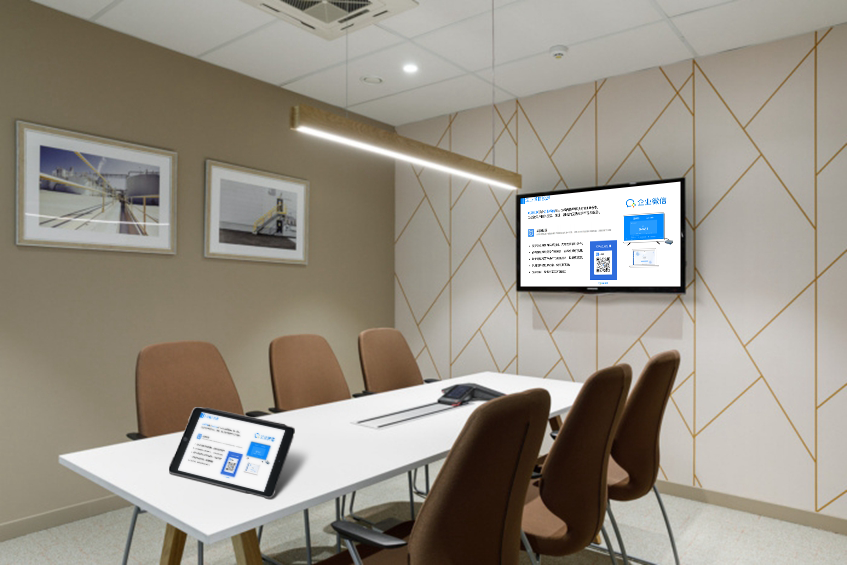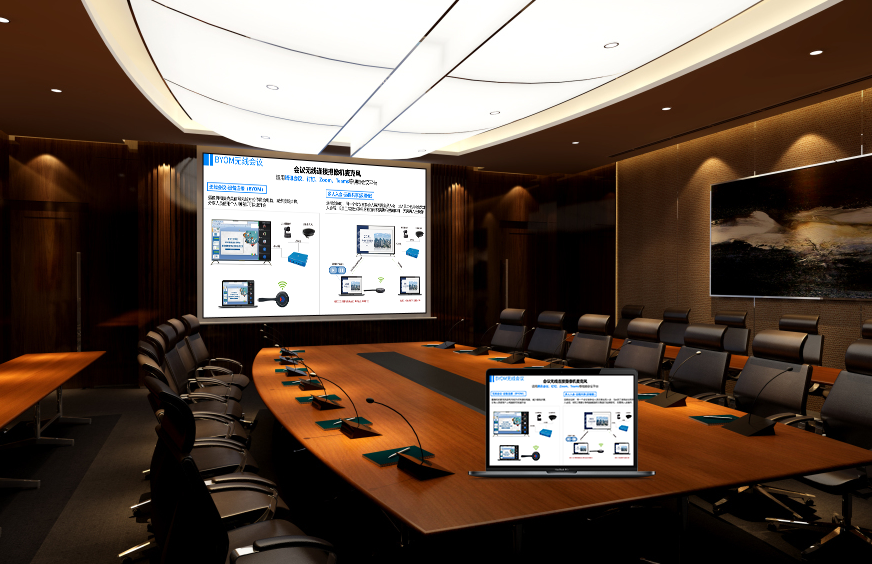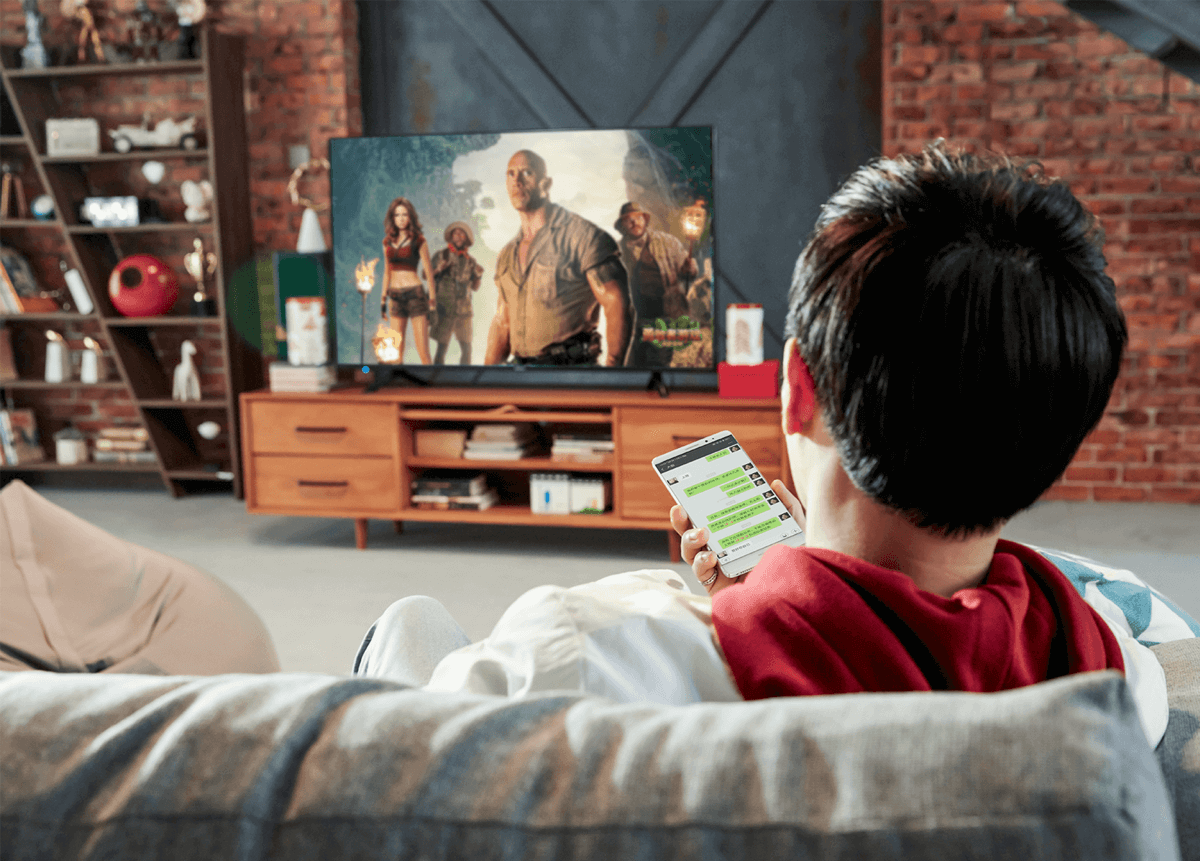Screen Mirroring: A Technology Solution for Simpler and More Efficient Device Interconnection
Screen mirroring technology is rapidly becoming the core link between small and large screens. It breaks down the barriers of device connectivity, allowing content from phones, computers, tablets, and other devices to be quickly and clearly displayed on a large screen. Whether for office meetings, classroom teaching, or home entertainment, it provides a more efficient and immersive experience.
I. Multi-Device Compatibility, Zero-Barrier Connection
Whether you have an iOS phone or tablet, an Android device, or a Windows or macOS computer, you can easily mirror your screen. There’s no need to worry about brand or operating system differences, nor is there a need to download extra software. You can connect quickly using the device’s native features. For instance, on an Apple phone, pull down the Control Center and tap “Screen Mirroring.” On an Android device, enable “Wireless Display” in settings. On a computer, use a hotkey to activate the mirroring function. A few simple steps are all it takes to display your content on a large screen, making it easy for even those who are not tech-savvy.
II. Flexible Connection Methods for Multiple Scenarios
(I) Wireless Connection, Free from Cable Constraints
In a Wi-Fi environment, devices can connect to the same network to enable wireless screen mirroring. In a meeting room, attendees can instantly mirror proposals from their phones or data charts from their computers to a large screen for discussion, without the hassle of plugging and unplugging cables, ensuring a smoother meeting flow. In the living room, family members can mirror movies and shows from their phones to enjoy an immersive experience on the big screen from the comfort of the sofa.
(II) Hotspot Direct Connection for Non-Network Environments
In outdoor or temporary locations without Wi-Fi, the large screen will automatically generate an encrypted hotspot. Devices can connect by scanning a QR code or entering a password. During an outdoor team-building event, people can mirror and share photos and videos to relive the highlights. At an exhibition, staff can quickly mirror product introductions to a display screen to attract passersby.
III. High Definition and Stability for a Superior Experience
The technology supports high-definition image transmission, ensuring that text and charts in documents, as well as detailed scenes in videos, are presented clearly with accurate color reproduction. When playing videos, audio and video are well-synchronized with low latency, so you won’t experience a mismatch between sound and picture when watching sports or action movies, providing a seamless viewing experience. Even when multiple devices are mirroring at the same time, the connection remains stable, free from issues like freezing or interruptions, ensuring smooth meetings, classes, and other events.
IV. Upgraded Interactive Features for More Efficient Collaboration
The large screen can not only receive mirrored content but also reverse-control the source device. In a meeting, the presenter can directly use the large screen to flip through PPT slides on their computer and annotate key points, saving the trouble of having to go back and forth to operate the computer. In class, teachers can grade student assignments submitted from tablets directly on the large screen, and the annotations are synced in real-time to the student’s device for instant feedback. Additionally, it supports multi-user annotation on the large screen, with different colored pen strokes distinguishing different viewpoints. This facilitates team discussions and brainstorming, making collaboration more efficient.
V. Wide Range of Applications, Multi-Dimensional Value
(I) Office Scenarios
Screen mirroring makes meetings more efficient. Attendees can instantly mirror and share ideas and data. Using the annotation feature on the large screen, they can quickly consolidate opinions and shorten the decision-making process. In remote meetings, locally mirrored content and remote video feeds can be displayed in a split-screen view, making long-distance collaboration feel like face-to-face communication.
(II) Educational Scenarios
Teachers can mirror courseware and videos to the classroom’s large screen for students to see more clearly. Students can also mirror their assignments and ideas for display, enhancing classroom interaction. With the large screen’s annotation and feedback features, teachers can instantly understand students’ learning progress and provide targeted explanations, improving teaching effectiveness.
(III) Home Scenarios
Screen mirroring adds fun to home entertainment. Families can mirror movies and play games together, enjoying quality family time. During friend gatherings, everyone can take turns mirroring and sharing their photos and videos, making the atmosphere more lively.
Screen mirroring technology uses a simple connection method to achieve efficient collaboration between devices. It makes content flow more freely and interaction more convenient, playing a significant role in various scenarios and bringing numerous conveniences to people’s work, study, and daily life.